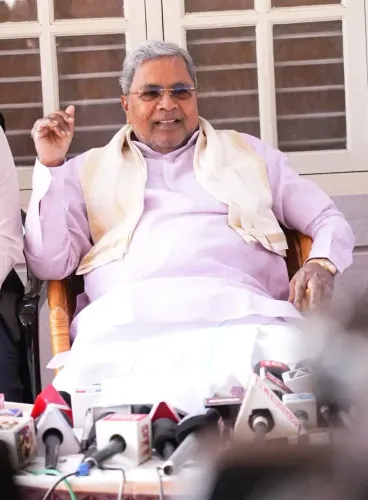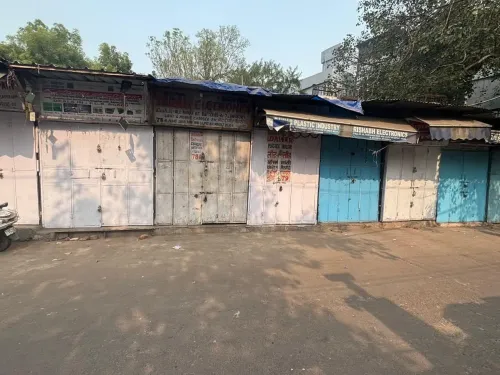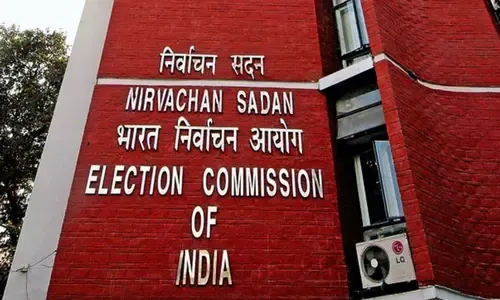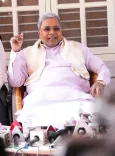2025 Delhi Political Showdown: Congress Vote Share Influences AAP and BJP Seat Count
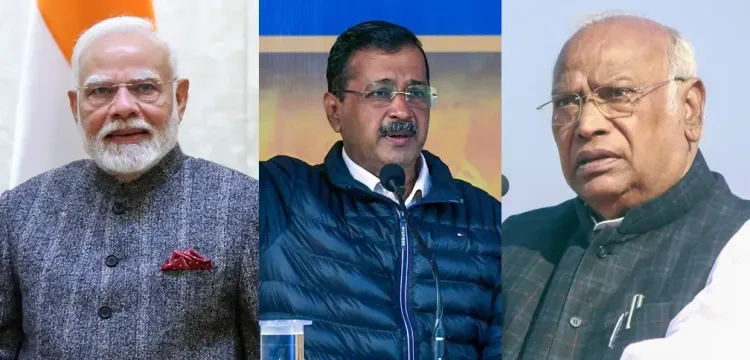
New Delhi, Jan 7 (NationPress) In the past two Assembly elections in Delhi, held in 2020 and 2015, the electorate showed strong support for the AAP, awarding it 53.6% and 54.3% vote shares respectively. This statistic offers a sense of assurance for the ruling party as it aims to achieve a respectable seat count in the upcoming elections scheduled for February 5, despite the mounting pressure from both the BJP and Congress.
The sentiment within the AAP is that, even under unfavorable circumstances, their vote share is unlikely to plummet to a level that would lead to their downfall. They aspire to remain a significant player in Delhi's political landscape.
Pollsters have consistently indicated that the BJP’s performance in the Delhi Assembly elections is, in part, contingent on the Congress' performance and its capacity to encroach upon AAP's voter base, which includes Muslims, slum dwellers, Purvanchalis, and residents of unauthorized colonies who support former Delhi Chief Minister Arvind Kejriwal’s welfare initiatives.
In 2020, the overall voter turnout was 62.82%, with the AAP securing 62 seats and a vote share of 53.6%. In 2015, the AAP achieved 67 seats.
The BJP claimed 8 seats in 2020 and 3 in 2015. The saffron party's vote share in 2020 stood at 38.5%, while the Congress garnered a mere 4.26% vote share in the same year.
During the 2015 elections, total voter turnout reached 67.47%. The AAP’s vote share rose by 24.8% from the previous election in 2013, resulting in an increase in seats from 28 to 67, a net gain of 39 seats.
Conversely, the BJP experienced a decline in vote share by 0.8% to 32.3%, with seats dropping from 32 to 3 in the same time frame. The Congress vote share fell to 9.7%, losing 14.9% percent and failing to secure any seats, marking a loss of eight.
This election marked a pivotal moment for the Congress, which saw a total loss of voters to the new party. The 14.9% drop in Congress' vote share translated into gains for the AAP.
The Modi Effect: Between the 2015 and 2020 elections, the BJP’s vote share increased from 32.3% to 38.5%. The 2020 Assembly election was the first instance where BJP supporters, along with other voters in Delhi, cast their votes after evaluating the performance of the Narendra Modi government at the Centre after a full five-year term.
In the lead-up to the 2015 elections, the Modi administration was only a year old, and residents of Delhi had yet to witness its long-term impact.
If past results are any guide, the BJP's backing and vote share in the forthcoming elections are likely to increase, as voters are now more familiar with the 'Modi Magic' and his reputation for fulfilling promises.
The likelihood of residents of Delhi voting based on Modi's reputation, akin to voters in Haryana and Maharashtra, is quite high, particularly since the Prime Minister has pledged to maintain all free welfare initiatives provided by AAP and aims to elevate Delhi to a global capital.
Pollsters suggest that if both the AAP and BJP promise the same free welfare services, the key differentiating factor influencing voter decisions may be the clean image of their respective leaders: Arvind Kejriwal for the AAP and PM Modi for the BJP.
“A clash between Modi and Kejriwal in Delhi could provide an advantage to the BJP due to the allegations of corruption against the AAP leader,” remarked a political science educator at Delhi University, while noting that the BJP will need to address Kejriwal’s ability to garner voter sympathy by alleging victimization from the Centre and the imposition of “false” corruption charges.
Voter participation: High voter engagement, a strong showing from the Congress in terms of vote share, and measures against fraudulent voting may significantly influence the outcomes for both the AAP and BJP in the upcoming elections.
Enhanced performance by the Congress may serve to keep the historic party afloat in a city where its identity is increasingly fading.
Among Delhi districts, the highest turnout in the 2015 Assembly elections was recorded in North West at 68.58%, followed by Shahdara district at 65.81% and East district at 64.26%.
The elevated turnout in the trans-Yamuna area reflects the high expectations of residents from unauthorized colonies and unplanned regions regarding free access to water, electricity, healthcare, sewage, and road infrastructure—all commitments repeatedly made by the AAP.
The lowest turnout was in the New Delhi district at 56.24%, indicating voter apathy in more developed areas where residents enjoy substantial infrastructure and are largely ineligible for free utilities. This district includes constituencies such as Patel Nagar, Delhi Cantonment, Rajender Nagar, New Delhi, R.K. Puram, and Greater Kailash.

